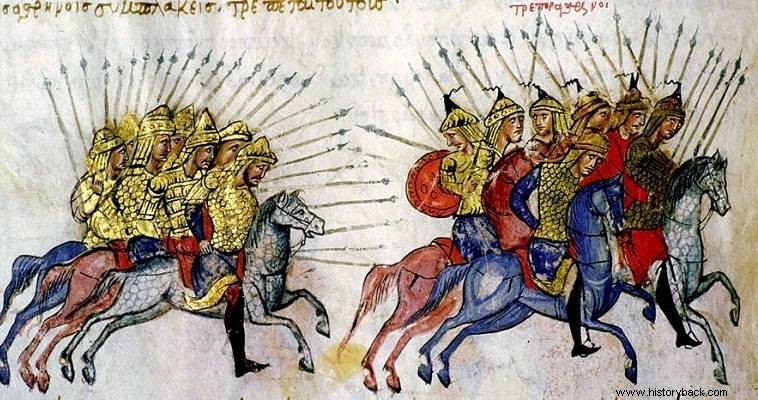
The Arabs were the greatest threat to the existence of the Byzantine Empire until the arrival of the Turks. After their initial successes and the conquest of Egypt, Palestine and other Byzantine lands, their goal was to conquer the Queen of Cities, Constantinople.
Although they failed, twice, they were not deterred and continued to campaign in Asia Minor, with the aim of limiting the Byzantine rule, up to the shores of the Bosphorus and, after preparing, to attack the City again and from there pass to Europe, setting its whole under the yoke of Islam.
From 723 AD the caliphate was under the active Hisham ibn Abd al-Malik, who was a sworn enemy of the Byzantines. Thus, at regular intervals, he attempted large-scale attacks in Asia Minor, with the ultimate goal of conquering the City, which his brother Maslamas had failed to capture in 717-18 AD. In 740, after some successful raids against the Byzantines, al-Malik decided to launch a large-scale attack. For this purpose he gathered 90,000 fanatical Muslim warriors and invaded Asia Minor.
Emperor Leo III Isaurus, had information about the enemy raid, but, having to face threats on the European front as well, he was not able to gather such large, correspondingly large forces. He gathered around 15-20,000 men, mainly of the imperial - elite - battalions and battalions from the Theme of the East (Phrygia, western Cappadocia).
The 55-year-old emperor took with him his 22-year-old son and successor Constantine V, the so-called Kopronymos, also known as the first Bulgarian killer. The Arab invaders divided their forces into three divisions. A division of 10,000 men was sent to sack the coastal Greek cities of Cilicia. Another division, 20,000 men, under the generals al-Batal and ibn Swaib, moved towards Phrygia, as the vanguard of the main force – 60,000 men – commanded by the caliph himself.
Leo and Constantine had chosen to make Phrygia their base, because this province is in the center of the Asia Minor plateau and from there a force can move in any direction. The emperor, an old warrior himself, had sent scouting parties of light horsemen – the ancestors of the famous Akrites – in every direction, so that he would know, at any moment, where the Arabs were.
Thus he was informed that the caliph had divided his army into three and decided, maneuvering on internal lines (a maneuver used on many occasions by the Byzantines and not only "copied" by Napoleon the Great), to attack the division of 20,000 men.
He knew that the division of 10,000 Arabs would hardly be able to capture the well-fortified coastal cities, and he did not have the strength to face the caliph's 60,000 men. Besides, even if he attempted it, he would be surrounded, in turn, by the division of 20,000 Arabs.
So the emperor moved towards the city of Akroinon, where he met the equivalent Arab force and routed it. Of the 20,000 Arabs, 13,200, according to the historian Theophanes, fell in battle, along with their generals. The rest, unfortunately, retreated and joined the forces of the caliph, who in a rage ordered them to plunder everything.
In this, however, he failed, as Leo and the young Constantine, now applying guerilla warfare tactics, overwhelmed the Arabs beyond belief and annihilated every single detachment. Thousands of Arabs were slaughtered in ambushes and another 20,000 were captured.
It was a triumph for the Byzantines and indeed a triumph that was won with very little, their own, losses. Humiliated, the caliph made his way back. The Arab danger, however, would remain alive for two more centuries, until Nikephoros Phokas, John Tsimiskis and Basilios Voulgaroktonos, once again reached the limits of the empire in Mesopotamia.
